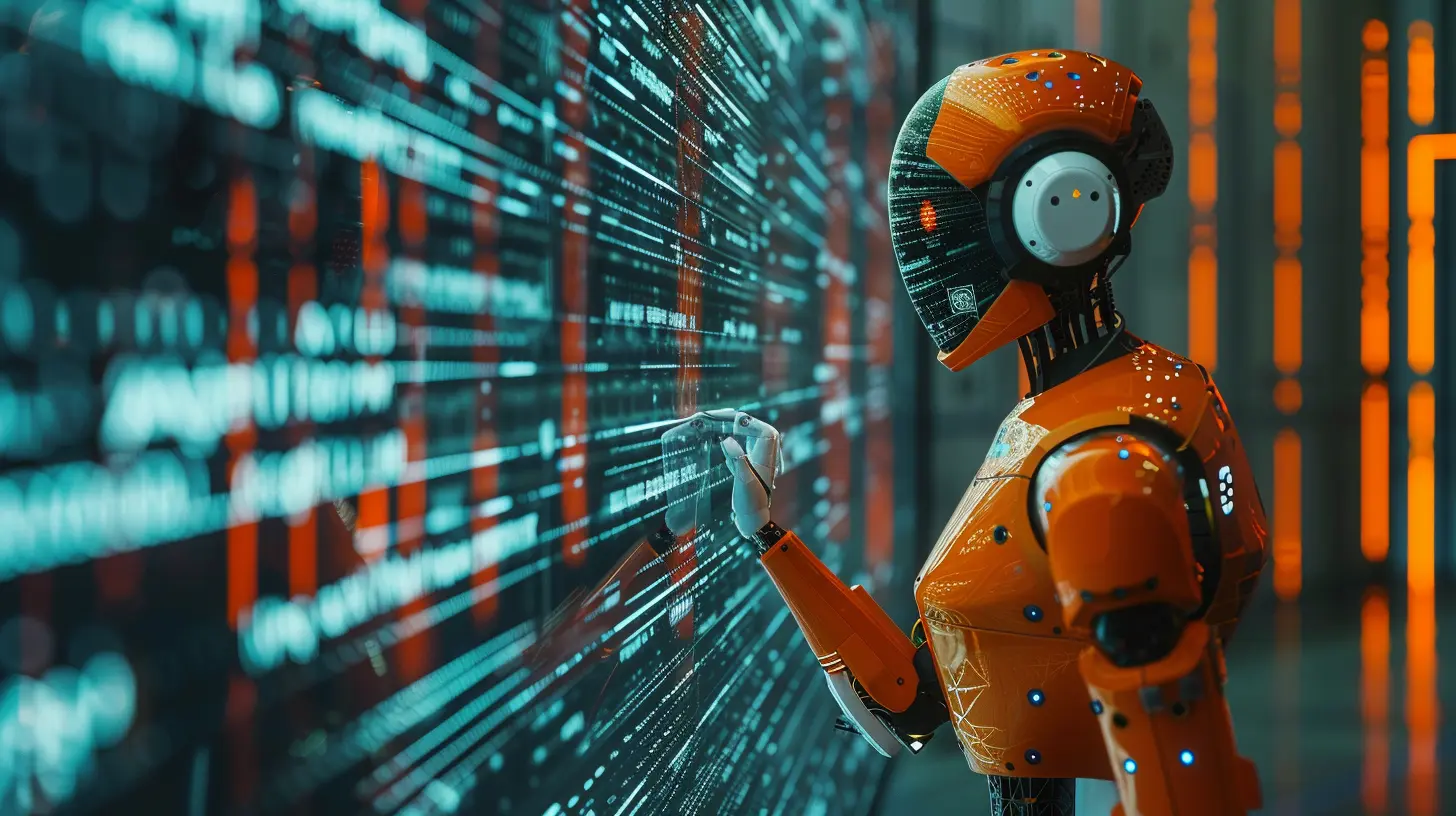The Role of Transparency in Ethical AI Development
9 June 2025
Artificial Intelligence (AI) is no longer some far-off concept limited to sci-fi movies and labs filled with wires and blinking lights. It’s here. It’s real. And it’s reshaping our lives in ways we couldn't have imagined just a decade ago. From voice assistants and personalized recommendations to self-driving cars and predictive healthcare — AI is everywhere.
But as much as we’re amazed by all that AI can do, there’s a growing, urgent question we need to answer: Can we trust it?
That’s where transparency steps in.
Transparency is more than just a tech buzzword. In the world of ethical AI development, it’s the bedrock of trust, fairness, accountability, and ultimately — human well-being.
Let’s unpack why transparency in AI isn’t just important — it’s absolutely non-negotiable.
🧠 Why Transparency Matters in AI
Imagine being judged by a system you don't understand.That’s the situation many people find themselves in when automated decision-making systems — whether in hiring, loans, or law enforcement — don’t provide clear explanations for their choices. It’s like being in a courtroom where the judge makes a decision, walks out, and leaves you in the dark.
Would you call that fair? Absolutely not.
When we talk about AI making ethical decisions, transparency isn’t just "nice to have." It’s the basic requirement for fairness and justice.
It Builds Trust
People are more likely to trust a system when they know how it works. Think about it — would you blindly follow GPS instructions without knowing if it’s taking you through a war zone or a peaceful shortcut? Probably not.In AI, transparency clears the fog. It answers the "why" behind every decision. That builds user confidence and broader public trust.
It Enables Accountability
If a self-driving car crashes, who’s responsible? The manufacturer? The software developer? The AI itself?Without transparency, questions like these are impossible to answer. Transparent systems allow us to trace actions and decisions back to their source. That’s essential for holding the right people accountable — and for improving systems going forward.
It Supports Ethical Auditing
AI systems, like humans, are not perfect. But unlike humans, they can't be questioned directly — unless they’re transparent. Transparency allows independent experts to audit algorithms, uncover biases, test fairness, and recommend improvements.Without that, we’re just taking a leap of faith.
👁️🗨️ What’s Really Happening Behind the Scenes?
AI models are often thought of as black boxes. You give them data, they spit out results, and no one really knows what’s happening inside. That mysterious “black box” has become one of the most serious ethical concerns in modern computing.So what makes AI so opaque in the first place?
The Complexity of Machine Learning Models
Most AI systems today are built using machine learning — techniques that learn from data, rather than following hard-coded rules. Especially with deep learning, which uses layered neural networks, the logic behind decisions can be incredibly complex.Even data scientists sometimes struggle to explain why a neural network made a particular choice.
That’s a problem.
Proprietary Systems and Trade Secrets
Another reason for AI opaqueness is good old-fashioned capitalism. Companies often keep their models and data under wraps to protect trade secrets. While this is understandable from a business standpoint, it clashes head-on with the need for transparency in ethical AI.If we can’t inspect a system, how do we know it’s fair?
⚖️ Ethical Risks of Opaque AI Systems
Let’s not sugarcoat it — when AI systems lack transparency, people can get hurt. Here are just a few examples of what can go wrong:Bias and Discrimination
AI learns from data. If that data contains biases — and spoiler alert: it often does — then the AI will replicate and even amplify those biases.We’ve seen algorithms discriminate in hiring, in predictive policing, and even in healthcare. Without transparency, identifying and correcting these issues is almost impossible.
Lack of Consent and Knowledge
Users often don’t even know they’re interacting with AI, let alone what it’s doing with their information. That’s not just unethical — it’s a violation of privacy rights.Inability to Contest Decisions
If an AI system rejects your loan application, shouldn't you have a right to understand why? Shouldn't you be able to challenge that decision?Without transparency, you’re powerless.
🌱 How Can We Make AI More Transparent?
Okay, so we know transparency is critical. But how do we actually make it happen?Glad you asked.
1. Explainability
“Explainable AI” (XAI) is all about designing systems that can explain their decisions in human-understandable terms. Think of it as giving AI a voice — one that makes sense to everyday users.Instead of saying, “You’ve been denied a loan,” the system should say, “Based on your credit history and income, you did not meet the threshold.”
It’s not rocket science — it’s basic respect.
2. Open Source and Open Algorithms
Making the code behind AI systems publicly available allows experts across the globe to inspect, test, and improve it. It fosters collaboration, reveals flaws, and encourages innovation grounded in ethics.We don’t need to open every line of code — but we do need more openness.
3. Data Transparency
It’s not just about code. The quality, diversity, and source of training data play a massive role in how AI behaves. Companies need to be more transparent about where their data comes from and how it’s used.If garbage in = garbage out, then let’s make sure we know exactly what’s going in.
4. Ethical Audit Trails
Building systems that keep track of their own decisions and actions — sort of like a flight recorder in an airplane — can help with accountability and debugging. These “audit trails” allow experts to understand what went wrong when something fails.5. Human-in-the-Loop Systems
Let’s not hand over the keys to AI just yet.Keeping human oversight in AI systems — especially for critical decisions — ensures that someone is always there to step in when needed. It’s a safety net we absolutely need.
🌍 Transparency as a Global Effort
Ethical AI development isn’t just a tech problem. It’s a socio-political one too. Governments, organizations, and communities all have a role to play.Regulatory Frameworks
Laws like the EU’s GDPR and the upcoming AI Act are pushing for greater algorithmic transparency. These legal frameworks are essential in setting the ground rules for AI.And let’s be honest — some companies won’t change unless they’re forced to.
Industry Standards
Tech giants have massive influence. By establishing and adhering to transparency standards, they can lead by example — or at least stop being part of the problem.Empowered Users
The more consumers demand transparent and fair AI, the more likely companies are to deliver it. So speak up, ask questions, and hold systems accountable.🚀 The Future of Ethical AI
Building transparent AI systems isn’t just about doing the right thing. It’s also smart business.People will always trust what they understand. Transparent systems are easier to adopt, easier to regulate, and ultimately — more impactful.
In the coming years, transparency could very well become the competitive edge that defines the leaders in AI innovation.
So let’s not treat transparency as a checkbox. Let’s put it at the heart of every AI system we create.
Because when we shine a light inside the "black box," we don’t just make better systems.
We make a better world.
🛠️ Final Thoughts
We’re at a critical juncture in the AI journey. The tools we build today will shape the society of tomorrow. Transparency isn’t just one ethical principle among many — it’s the key to unlocking all the rest: fairness, accountability, and trust.So the next time someone talks about AI being the future, ask them:
“What kind of future are we building — and can we see how it works?”
That’s how change begins — with questions, with awareness, and with the courage to demand more from our machines.
Let’s keep the conversation going — transparently.
all images in this post were generated using AI tools
Category:
Ai EthicsAuthor:

Ugo Coleman
Discussion
rate this article
2 comments
Xylo Black
Transparency in AI: like a glass toaster—makes everything clearer and less burnt!
August 28, 2025 at 2:56 AM

Ugo Coleman
Thank you for the clever analogy! Transparency indeed helps illuminate the processes behind AI, ensuring better outcomes and ethical practices.
Karina Cook
Transparency in AI fosters accountability, enabling ethical practices and building public trust in technology's impact on society.
June 20, 2025 at 3:26 AM

Ugo Coleman
Thank you for your insightful comment! I completely agree that transparency is crucial for accountability and fostering public trust in AI technology.


